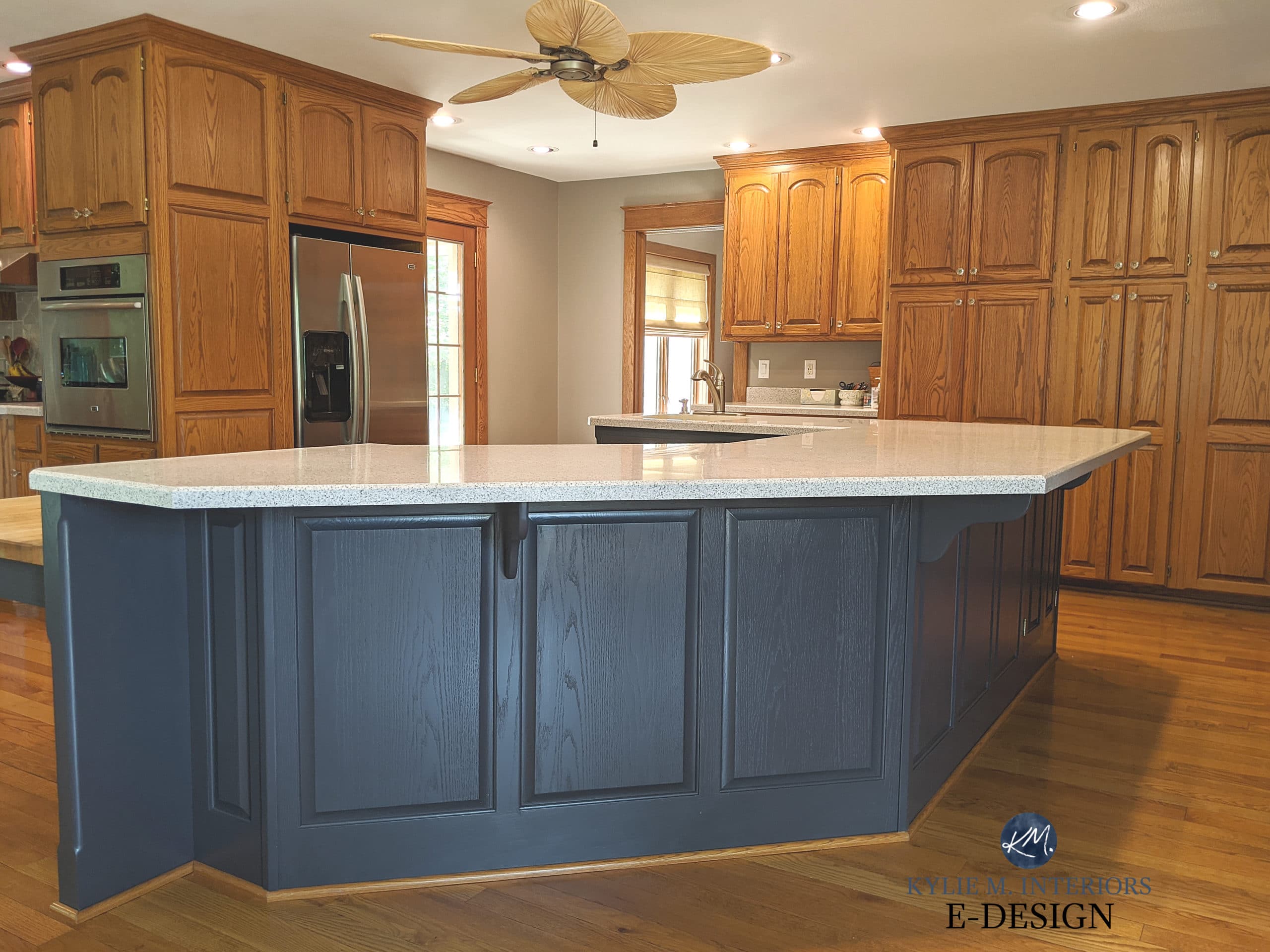Choosing the Right Paint and Preparation Techniques

Transforming your kitchen cabinets with a realistic wood grain effect requires careful consideration of both the paint type and meticulous surface preparation. The right paint will dramatically impact the final look and longevity of your project, while proper preparation ensures a smooth, even finish that highlights the detail of your faux wood grain.
Painting wood grain cabinets – Selecting the appropriate paint and diligently preparing the cabinet surfaces are critical steps in achieving a professional-looking finish. Failing to do so can result in an uneven, blotchy appearance, chipping, or peeling, undermining the entire project. This section will delve into the specifics of paint selection and surface preparation, offering practical guidance for a successful outcome.
Paint Selection for Wood Grain Effects
The choice of paint significantly influences the final aesthetic and durability of your faux wood grain. Acrylic, latex, and oil-based paints each possess unique properties that make them suitable, or unsuitable, for this specific application. Acrylic paints are water-based, offering easy cleanup and low odor, making them a popular choice for home projects. However, they might require multiple coats for optimal coverage and may not be as durable as oil-based paints. Latex paints, also water-based, offer good durability and are relatively easy to clean up, though they might not offer the same depth of color as oil-based paints. Oil-based paints provide exceptional durability and a smooth, rich finish, ideal for creating realistic wood grain effects. However, they have a strong odor, require solvents for cleanup, and take longer to dry.
Cabinet Surface Preparation, Painting wood grain cabinets
Thorough preparation of the cabinet surfaces is paramount to achieving a high-quality, long-lasting finish. This involves a series of steps designed to remove dirt, grease, and old finishes, creating a smooth, clean surface for the paint to adhere to. Skipping these steps can lead to adhesion problems, resulting in peeling or chipping paint. Proper sanding ensures a smooth surface, improving paint adhesion and creating a professional finish. Priming helps to seal the surface, promoting better paint adhesion and preventing the underlying wood from showing through.
Cabinet Preparation Checklist
Before you even think about applying your wood grain paint, ensure you meticulously follow this checklist. Each step is crucial for a successful outcome, and neglecting even one can significantly impact the final result. This structured approach will minimize potential problems and maximize the longevity of your paint job.
- Clean the cabinet surfaces thoroughly with a degreaser to remove any dirt, grease, or grime.
- Sand the surfaces using appropriate grit sandpaper (starting with coarser grit and gradually moving to finer grit) to smooth out any imperfections and ensure proper paint adhesion.
- Fill any holes or cracks with wood filler, allowing it to dry completely before sanding smooth.
- Remove all dust and debris using a tack cloth or damp cloth.
- Apply a high-quality primer suitable for cabinets, allowing it to dry completely according to the manufacturer’s instructions.
- Lightly sand the primed surfaces with fine-grit sandpaper to create a smooth surface for the paint.
- Wipe down the surfaces with a tack cloth to remove any dust.
Advanced Techniques and Design Considerations: Painting Wood Grain Cabinets

Transforming plain cabinets into stunning focal points involves mastering advanced painting techniques and carefully considering design elements. The artistry lies not just in the application of paint, but in creating depth, texture, and visual interest that elevates the overall aesthetic of the space. Careful planning and execution are crucial for achieving professional-looking results.
Creative Wood Grain Designs
Achieving realistic or stylized wood grain effects requires a multi-step process and a keen eye for detail. One popular technique involves using a dry-brushing method with various shades of paint to mimic the natural variations in wood color and texture. For example, to simulate oak, one might start with a base coat of a light tan, followed by dry brushing applications of darker browns and grays, using a stiff-bristled brush to create a streaked effect. The key is to control the amount of paint on the brush, allowing the underlying colors to show through for a natural look. Tools required include various sized brushes, sponges, and potentially a palette knife for creating textural variations. Another approach involves using masking tape to create linear patterns reminiscent of wood grain, allowing for more geometric and stylized designs. This technique offers greater control and allows for bolder, more contemporary interpretations of wood grain. For instance, a bold black and white scheme using masking tape could produce a strikingly modern effect. The precise application of tape and careful painting are paramount for sharp lines and a clean finish.
Impact of Color Choices
Color significantly impacts the perceived mood and style of the cabinets and the entire room. Light, airy colors like creamy whites, soft grays, and pale blues create a sense of spaciousness and serenity, ideal for smaller kitchens or rooms with limited natural light. These colors pair well with shaker-style cabinets and minimalist design aesthetics. Conversely, richer tones such as deep greens, navy blues, and warm browns impart a feeling of warmth and sophistication. These colors complement traditional or rustic cabinet styles and create a cozy atmosphere. For example, a deep teal would beautifully complement a craftsman-style kitchen, while a warm, honey-toned brown would enhance the rustic charm of a farmhouse setting. Furthermore, considering the undertones of the paint is crucial. A cool-toned gray can feel stark and modern, while a warm-toned gray can create a more inviting and comfortable feel. The interaction between cabinet color, wall color, and countertop material should be carefully considered for a harmonious and visually appealing outcome. Using a color wheel can assist in selecting complementary or contrasting colors that enhance the overall design.
